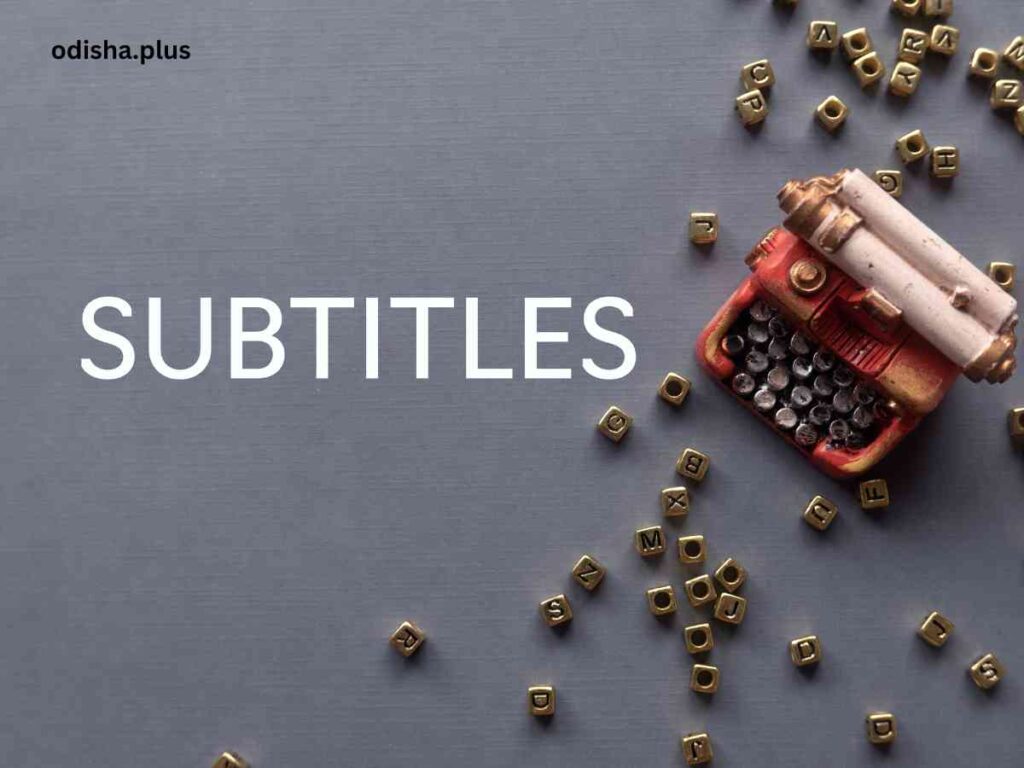While submitting films for consideration in India for National Award, Subtitle in English (SiE) is an essential prerequisite
Kapilas Bhuyan

It’s a heartening fact that a lot more Odia films are made today than ever before, which means more numbers of young filmmakers from Odisha have been active over last one decade in the field to prove their creative niche. However, they find it very difficult to release their films as there are very limited number of theaters available for the purpose, and most of them are reluctant to release their ventures with the pretext that viewers don’t turn up for Odia films.
Despite the road blockers some of the filmmakers and producers try hard to release their films in the multiplexes and those who succeed, more often than not, they enjoy the pleasure hardly for a week or so! Since these releases are mostly a rental-pay effort, most filmmakers find it difficult to continue screening for higher number of days. Besides, most viewers don’t turn up to view Odia films considering it as not worth spending for it as compared to Bollywood or Hollywood flicks having all entertaining elements embedded in them.
The young generation filmmakers and the newbies those who want to make films often get into a dilemma. Filmmaking is an expensive medium and it requires a lot of hard work to realize one’s creative oeuvre. It’s also largely a passion driven effort. Getting access to a willing producer or organizing the funds required to make a film, and working simultaneously on the creative areas of telling the story in audio-visual progression very often get into loggerheads.
If on one hand a filmmaker becomes successful by giving all his efforts to get the funds, s/he ends up in not being able to give enough effort in developing the film, the project suffers, and if the filmmaker gives much attention to develop the project without being certain about a potential producer, the film may fail to see the daylight leading to a real Catch-22 situation.
So, it is always better to give full attention to develop the content and structure of a film project as most Odia films suffer from it. The aim should be to attain the quality benchmark having the dramatic graph of storytelling. This will enable the film to be circulated in the festival circuit all over the globe. If the film clicks at any of the festivals, half of the promotion is done, and in continuum, one click will take the film to the next. However, in order to click in the festival circuit, primarily the film has to be well-made with good content and structure having astute subtitle in English.
Films are basically visual narrations and dialogues are integral to the progression of it. However, in a global scenario, films have been made in innumerable languages and dialects. In India itself films are made in various regional languages and local dialects. Therefore, it’s essential to embed Subtitles in English (SiE) to be understood by outside viewers.
While submitting films for consideration in India for National Award, Subtitle in English (SiE) is an essential prerequisite. Similarly in global context films are subtitled in various languages like Spanish, French, German, Japanese and so on as unlike India, they don’t understand English very much. For example, if a film is selected to Cannes Film Festival, it needs to be subtitled in French.
However, in order to have a wider viewership, Subtitle in English (SiE) is essential for an Odia film. In a recent development my attention was drawn to the fact that Phalguna Chaitra, an Odia film was internationally released in 10 countries and within just 30 hours 50K people could view the film, which is a kind of a record for any Odia film. This is where Subtitle in English (SiE) plays a vital role.
This is only one way of looking at it. In my opinion, in order to reach out to other language speaking audience in India, the Odia filmmakers should try to subtitle their films in other Indian languages like Hindi, Gujrati, Punjabi, Assamese, Bengali, Malayali, Tamil, Telugu, Kannada, etc. to garner more audience. This will help in physically releasing the films in those language speaking states, and OTT platforms.
However, primarily we need to make good quality Odia films having universal audience appeal, and if we succeed in doing so there wouldn’t be dearth of audience to back up our efforts. It’s time now to act.
(The author is a Senior Journalist and National Award-winning Filmmaker. Views are personal.)




























